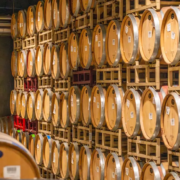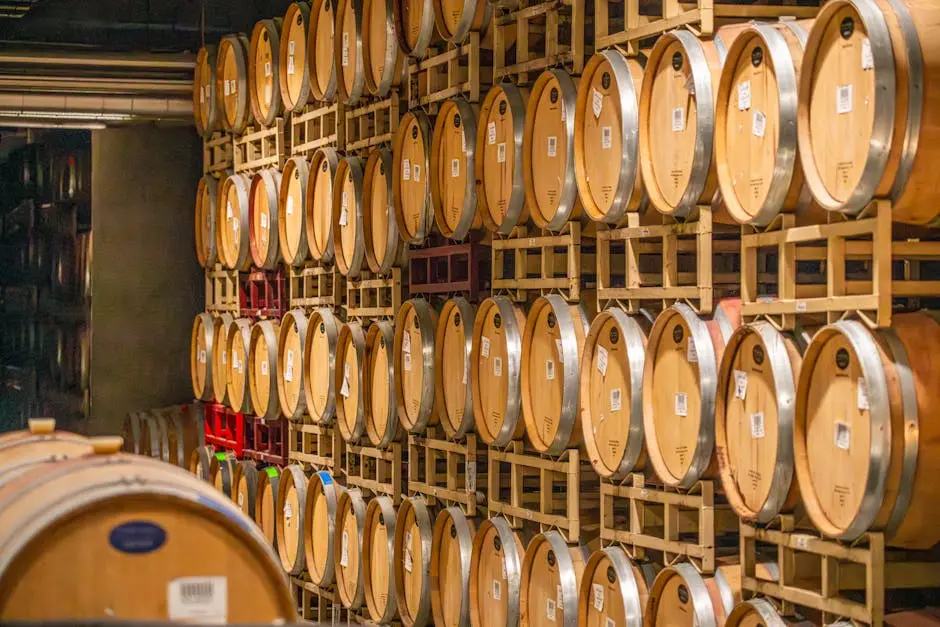Exploring Bulk Wine Storage: A Guide to Secure Your Vintage
If you’re a wine enthusiast, the thought of storing your collection properly may weigh heavily on your mind. Bulk wine storage is essential for preserving the quality of your vintage, ensuring every bottle is ready for that special occasion. In this guide, we’ll walk you through the essentials of bulk wine storage, helping you create the perfect environment for your cherished bottles.
Understanding the Importance of Proper Wine Storage
Wine is a delicate beverage that demands specific storage conditions to maintain its flavor and character. Learn why temperature, humidity, and light play crucial roles in wine preservation.
The first step in caring for your wine is recognizing that it’s living, breathing liquid. It changes and evolves over time, and that evolution can be impacted significantly by its environment. This sensitivity means that even slight variations in temperature or exposure to light can alter the taste of your favorite wine, making it less enjoyable. Keeping wine in a consistently cool, dark place is not just advisable; it’s essential for maintaining The integrity of your collection.
Many enthusiasts often overlook the impact of vibrations as well. Did you know that too much movement can disturb the sediments in the bottle and disrupt the aging process? This is why choosing a calm, quiet area for storage is just as important as the right temperature and humidity levels. Keeping these factors in mind will provide a solid foundation for your wine’s journey from cellar to celebratory table.
Choosing the Right Location for Bulk Wine Storage
Not all spaces are created equal for wine storage. Discover the best places in your home or dedicated wine cellar to establish a secure storage solution.
When selecting a storage space, avoid places that are prone to temperature fluctuations, like near a fireplace or in a room that receives direct sunlight. Ideally, you want to find a spot that offers protection from these elements—consider a basement if you have one. Basements often provide a steady, cool temperature and are shielded from external light. If you’re using a specific room, ensure it is insulated well and free from anything that could create heat or vibrations—think appliances or heavy foot traffic.
Additionally, if you’re considering a larger collection, investing in a dedicated wine cellar can be a game-changer. Wine cellars not only provide excellent conditions for your bottles but also allow you to showcase your collection beautifully. However, if building a cellar isn’t feasible, there are still plenty of decorative wine racks available that add character while providing storage.
Ultimately, the right location should resonate with a level of comfort, keeping your wine in an environment that feels secure and controlled. It’s all about making informed choices about where your prized vintages will spend their time maturing.
The Ideal Temperature and Humidity Levels
Maintaining the ideal temperature and humidity is critical. We’ll outline the perfect range for both and why it matters for the longevity of your wine.
For wine storage, most experts recommend a temperature range between 45°F to 65°F (7°C to 18°C). Within this window, red wines usually prefer slightly warmer temperatures, while whites appreciate the cooler side of the spectrum. It’s vital to keep those temperatures stable over time. Fluctuations can cause the wine to expand and contract within the bottle, leading to a breakdown of the cork and potential spoilage.
Humidity plays an equally important role, usually best kept between 50% and 70%. Why humidity, you ask? Well, maintaining the right moisture levels ensures that the corks remain moist and airtight, preventing them from drying out and allowing oxygen to seep into the bottle. You can use a hygrometer to monitor your storage area’s humidity levels and, if needed, invest in a humidifier to keep things in check.
Getting both the temperature and humidity levels just right may take some adjustment, but with diligence, you’ll find the sweet spot. Taking these small steps can significantly prolong the enjoyment of your favorite wines, ensuring every bottle reaches its peak when the time comes to enjoy it.
Storage Solutions: Racks, Shelves, and Wine Refrigerators
Explore various storage options available for bulk wine, from decorative racks to high-tech wine refrigerators, and how each option protects your collection.
When it comes to wine storage solutions, the choices are vast. Traditional wooden racks can beautifully showcase your bottles while providing the necessary support. These come in various styles and sizes to accommodate any collection. Some modern options even allow for larger formats, such as magnums, ensuring every bottle is stored securely.
For wine enthusiasts seeking convenience, wine refrigerators have become a popular choice. These appliances are specifically designed to maintain consistent temperature and humidity, making them ideal for both short-term and long-term storage. Plus, many models offer separate zones for red and white wines, allowing you to keep everything at its optimal serving temperature. If you’re thinking about spending a little extra for preservation, wine refrigerators are worth considering.
However, don’t forget about shelves—simple yet efficient. Shelves can be installed in closets or under stairs, maximizing your available space and helping you keep your collection organized. No matter your choice, it’s essential to ensure that the bottles are stored horizontally. This keeps the wine against the cork, helping to keep it moist, just as we discussed with humidity. The right solution is all about balancing functionality with your home’s aesthetics.
Common Mistakes to Avoid in Wine Storage
Even seasoned collectors can fall prey to common storage mistakes. Let’s highlight some pitfalls to steer clear of to ensure your wine remains in prime condition.
One prevalent mistake is ignoring light exposure. UV light can degrade a wine’s quality, changing its flavor profile in ways that are less than desirable. It’s crucial to keep your collection in a dark space or use UV-filtering glass if your wines are on display. Also, consider reducing any LED or fluorescent lighting, which can sometimes emit harsher rays.
Another frequent error involves overcrowding the storage space. While it might seem appealing to fit as many bottles as possible into one rack, this can impede airflow and lead to fluctuating temperatures. Instead, allow enough space between bottles for air to circulate freely. It’ll keep your collection temperate and make it easy to access those special bottles.
Lastly, many collectors underestimate the value of record-keeping. Organizing your collection isn’t just nice—it’s essential. Keeping a record of your wines helps you keep track of what’s ready to drink and what might need more time. This simple practice will enhance your overall wine experience and help you make the most of your splendid collection.
When and How to Serve Your Stored Wine
Knowing when to serve your wine and how to properly prepare it can enhance the tasting experience. We’ll provide tips on decanting, aeration, and serving temperature.
Service temperature is a vital aspect of enjoying your wine. White wines are often best served chilled, while reds can benefit from being slightly warmer. A helpful rule of thumb is to chill whites to temperatures around 45°F to 50°F (7°C to 10°C) and serve reds around 60°F to 65°F (15°C to 18°C). If you don’t have a thermometer, trust your instincts—this will become easier with practice.
Decanting and aeration can also dramatically impact your wine’s flavors. Allowing your red wine to breathe for about 30 minutes to an hour after opening can enhance its aroma and taste, bringing forth layers of flavors that might otherwise be masked. You can use a decanter or a simple glass—a little air can go a long way in unlocking your wine’s potential.
Ultimately, understanding these steps will not only ensure the quality of your wine experience but also take your appreciation for wine to new heights. The journey from bottle to glass is one filled with joy and discovery—a process worth celebrating!
Final Thoughts on Wine Storage
Securing your vintage in optimal storage conditions is key to enjoying its best flavors for years to come. By understanding the principles of bulk wine storage and taking the necessary steps, you can protect your investment and enhance your wine enjoyment. Cheers to a well-stored collection!




Leave a Reply
Want to join the discussion?Feel free to contribute!